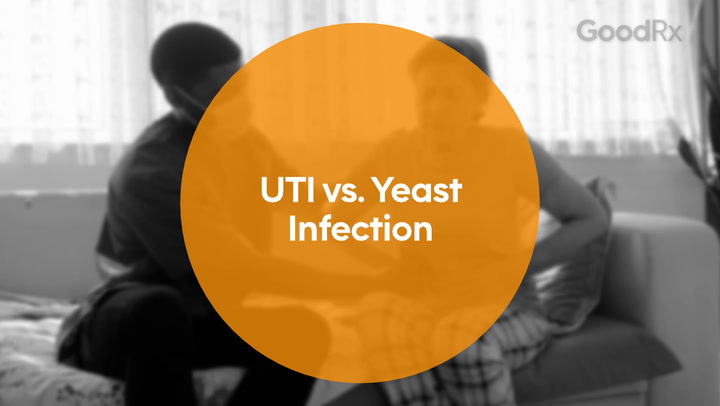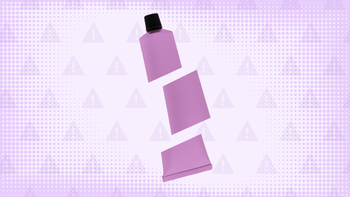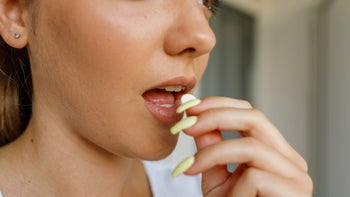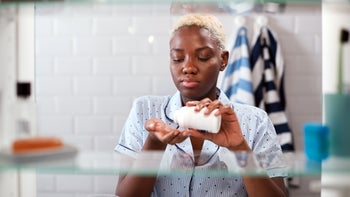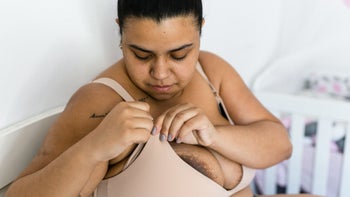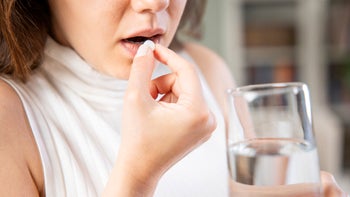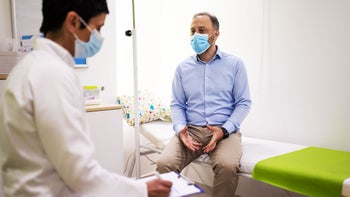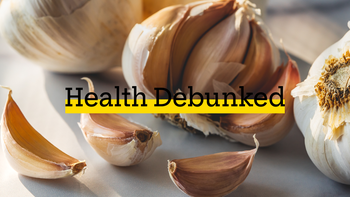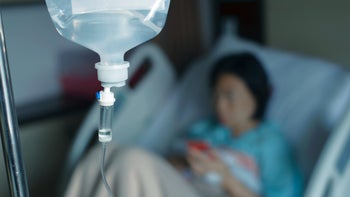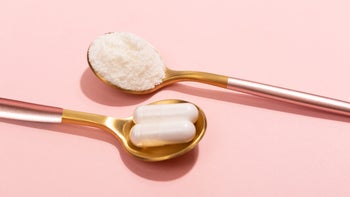
How to Get Rid of a Vaginal Yeast Infection
Key takeaways:
Vaginal yeast infections are very common, and there are many effective ways to treat them.
Medicines for yeast infection include over-the-counter creams and prescription pills. Both types of medication work equally well to treat yeast infections, but there are advantages and disadvantages to each.
There are steps you can take to help prevent yeast infections from occurring.
Access savings on related medications
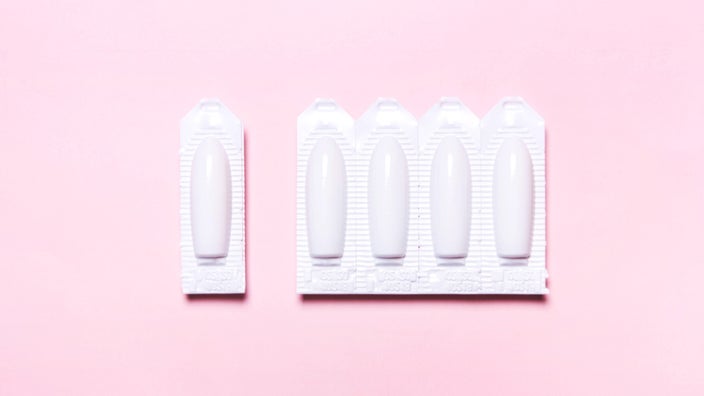
Yeast infections are no fun — but they do happen to pretty much all women. Effective remedies are available to quickly treat and relieve your symptoms. Here’s how to get rid of a vaginal yeast infection.
How do you get a yeast infection?
A healthy vagina has many organisms living in it, including bacteria and yeast. These organisms exist in balance and create an acidic environment that helps prevent infections. If that natural balance is disturbed, there can be an overgrowth of yeast. And that may lead to a yeast infection.
Some situations can make it more likely that you’ll get a vaginal yeast infection, including:
Increased estrogen levels, such as during pregnancy or when using certain hormonal birth control methods
Antibiotic use
Search and compare options
How do you get rid of a vaginal yeast infection quickly?
Studies show that treatment with either vaginal cream or an oral pill works more than 90% of the time to get rid of yeast infections. Uncomplicated vaginal yeast infections usually respond to treatment within a couple of days.
Treatment can take longer, depending on your overall health and the type of yeast infection. If you get yeast infections that don’t get better right away or keep coming back, you may need to use an antifungal for a longer period of time.
Best OTC vaginal yeast infection treatments
There are a few over-the-counter (OTC) topical preparations to get rid of a vaginal yeast infection. They come in single-dose, 3-day, and 7-day regimens that are inserted into the vagina. Examples include:
Miconazole (Monistat)
Clotrimazole (Lotrimin AF)
Tioconazole (Vagistat-1, Monistat-1)
Best prescription vaginal yeast infection treatments
You can get rid of vaginal yeast infection with OTC creams, or you may want to call a healthcare professional for prescription options.
Some of the best prescription vaginal yeast infection medicines are:
Butoconazole (Gynazole-1): Butoconazole cream is used as a single dose. So, use it one time and you’re done.
Terconazole (Terazol or Zazole): Terconazole is a prescription vaginal cream that comes in 3- and 7-day regimens.
Fluconazole (Diflucan): Fluconazole is an antifungal medication that you take by mouth. A single 150 mg dose of fluconazole continues to work for at least 72 hours after you take it.
Ibrexafungerp (Brexafemme): Ibrexafungerp is a newer prescription pill that can be used to treat vaginal yeast infections. It’s usually taken as a 300 mg dose twice per day for 1 day.
Yeast infection vs. UTI: Yeast infections and UTIs can have some similar symptoms. Here’s how to tell them apart.
Antifungal creams: Over-the-counter antifungal creams can treat a range of fungal infections, including yeast infections.
Yeast infection pills: Learn more about yeast infection pills, like fluconazole (Diflucan), including cost and treatment timeline.
The benefits of creams for vaginal yeast infections
OTC creams have few side effects, whereas the fluconazole single-dose pill may cause an upset stomach, headache, and rash. Fluconazole may also take 1 to 2 days longer than topical therapy to relieve symptoms and get rid of the yeast infection.
The benefits of the yeast infection pill
Yeast infection pills, like generic fluconazole, come as a single dose and are less expensive than many OTC topical antifungals. Also, fungal resistance to fluconazole isn’t common, so it works well. And, for many people, taking an oral pill is easier than applying a vaginal cream.
How long does a yeast infection last with treatment?
Most yeast infections last a few days with treatment. Symptoms are usually gone 2 to 3 days after starting a topical cream, or 3 days after taking an oral fluconazole pill.
If you aren’t getting better within a few days, connect with a healthcare professional. You may need a longer course of treatment or a different kind of treatment.
How long should I wait to have sex after yeast infection treatment?
Avoid sex — including oral, vaginal, or anal — until your yeast infection is completely treated. This means waiting until you’ve finished all your medication and no longer have any symptoms.
Can a yeast infection go away on its own?
Yes, mild yeast infections may go away on their own after a few days. But, if the symptoms are bothersome, you may want to start treatment right away to feel better sooner.
When to see a healthcare professional
It’s a good idea to talk with your gynecologist or primary care provider if you think you have a yeast infection. Some other conditions — like some sexually transmitted infections (STIs) and bacterial vaginosis — can cause similar symptoms, so you’ll want to make sure you’re treating the right thing.
What you can do to prevent vaginal yeast infections
Here are some steps you can take to lower your chances of getting a yeast infection:
Wear underwear that has a cotton crotch.
Avoid tight underwear or pants, which can increase moisture in the area.
Avoid douching and using scented feminine products (like sprays or bubble bath).
Change out of workout clothes and wet swimsuits as soon as possible.
Wipe from front to back after using the bathroom.
Change tampons and pads regularly.
Frequently asked questions
Some studies have shown that combining probiotics (either as pills or inserted into the vagina) with medications can help treat yeast infections faster. But probiotics don’t seem to be an effective treatment on their own.
Boric acid is a naturally occurring chemical that can help treat yeast infections that typical antifungal medications don’t cure. For this use, boric acid is made into a medication that’s inserted directly into the vagina. Talk with a healthcare professional before trying boric acid.
Other home remedies — like inserting garlic cloves or yogurt into your vagina — haven’t been proven to work for treating or preventing yeast infections. They can actually harm your vagina and should be avoided.
Yes, men can get yeast infections. Symptoms can include redness, itchiness, and discharge on the head of the penis and underneath the foreskin (if uncircumcised). Similar to yeast infections in women, treatment includes antifungal creams and pills.
It’s possible for a yeast infection to spread from one person to another, such as by having sex. But the risk is low. A yeast infection is more likely to spread to someone who has a weakened immune system.
The bottom line
Vaginal yeast infections are caused when there’s an overgrowth of yeast in the vagina, and they’re very common. The risk of getting a yeast infection is higher if you’re pregnant, use antibiotics, or have a weakened immune system. Over-the-counter creams and prescription pills work equally well to treat yeast infections, but each option has advantages and disadvantages. Talk with a healthcare professional to see which treatment option is best for you.
Why trust our experts?



References
Centers for Disease Control and Prevention. (2021). Vulvovaginal candidiasis (VVC).
Dovnik, A., et al. (2015). Treatment of vulvovaginal candidiasis: A review of the literature. Acta Dermatovenerologica Alpina, Pannonica et Adriatica.
Healthwise Staff. (2022). Vaginal yeast infections. HealthLink BC.
Healthwise Staff. (2023). Boric acid for vaginal yeast infection. HealthLink BC.
InformedHealth.org. (2022). Vaginal yeast infection (thrush): Learn more – vaginal yeast infections (thrush): What can help? The Institute for Quality and Efficiency in Health Care (IQWiG).
New York State Department of Health. (2018). What is a yeast infection?
Office on Women’s Health. (2021). Vaginal yeast infections. U.S. Department of Health and Human Services.
Pappas, P. G., et al. (2015). Clinical practice guideline for the management of candidiasis: 2016 update by the Infectious Diseases Society of America. Clinical Infectious Diseases.
Phillips, N. A., et al. (2022). Ibrexafungerp for the treatment of vulvovaginal candidiasis: Design, development and place in therapy. Drug Design, Development and Therapy.
SafeMedication. (n.d.). How to use vaginal tablets, suppositories, and creams.
Xie, H. Y., et al. (2017). Probiotics for vulvovaginal candidiasis in non‐pregnant women. Cochrane Database of Systematic Reviews.


